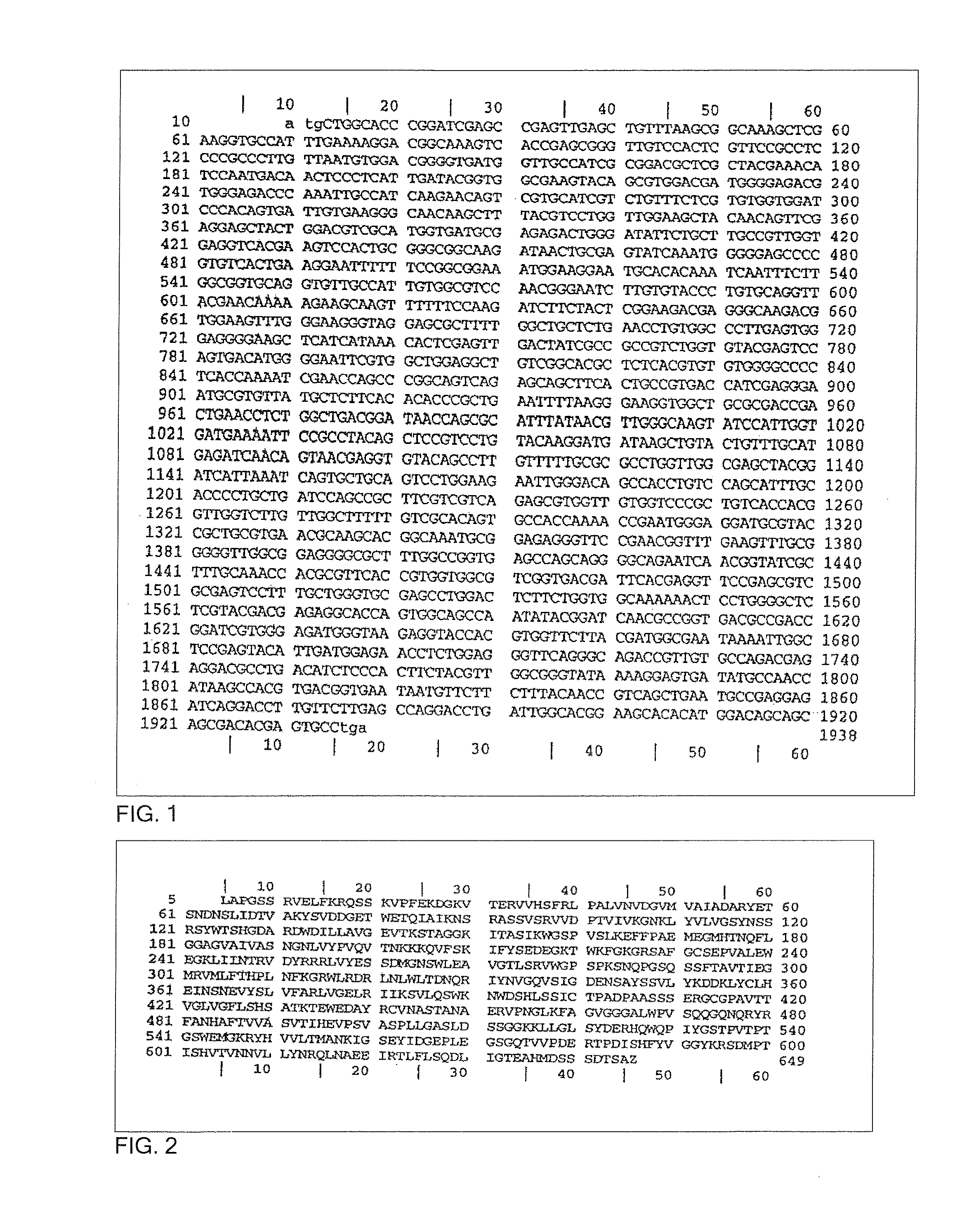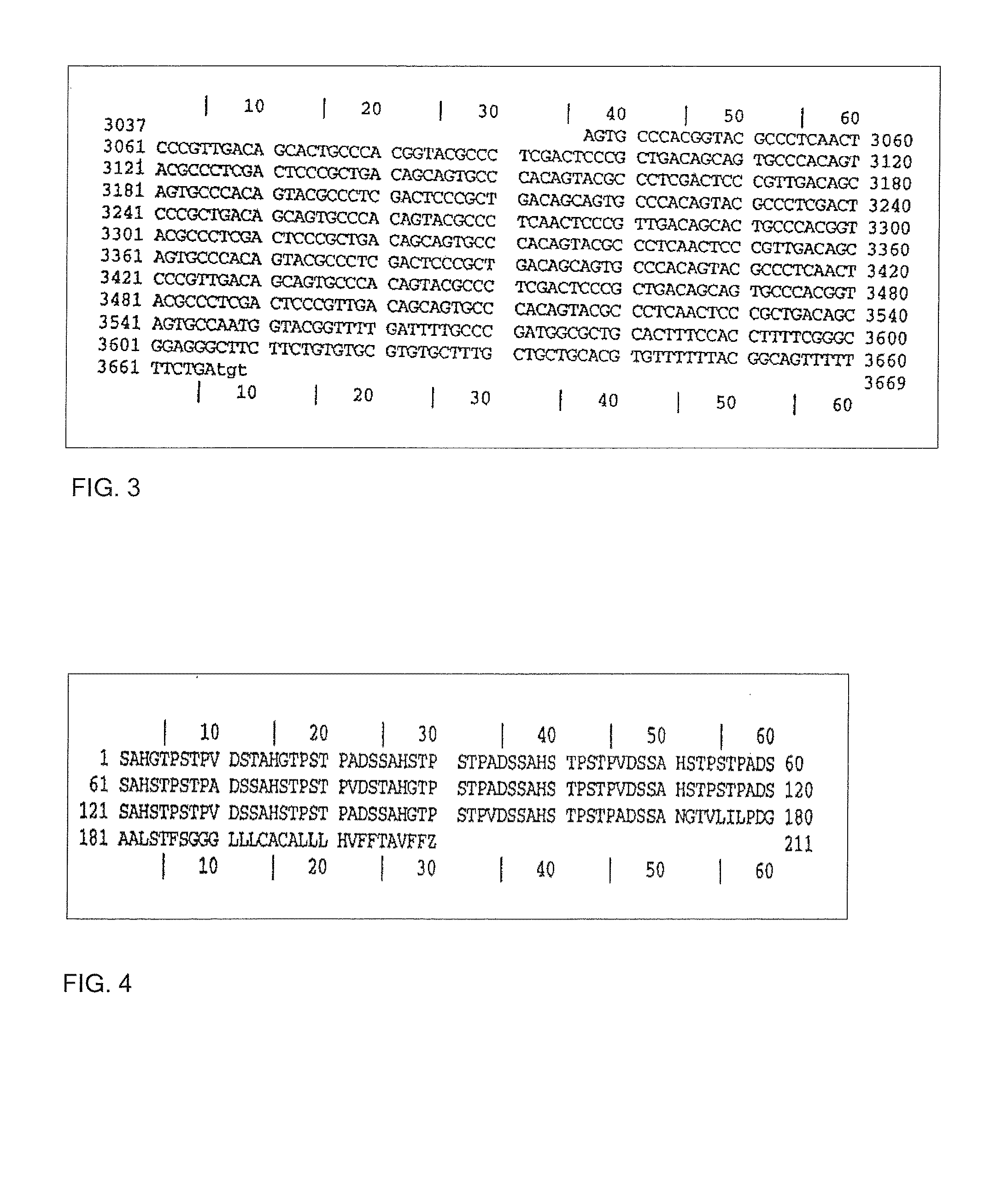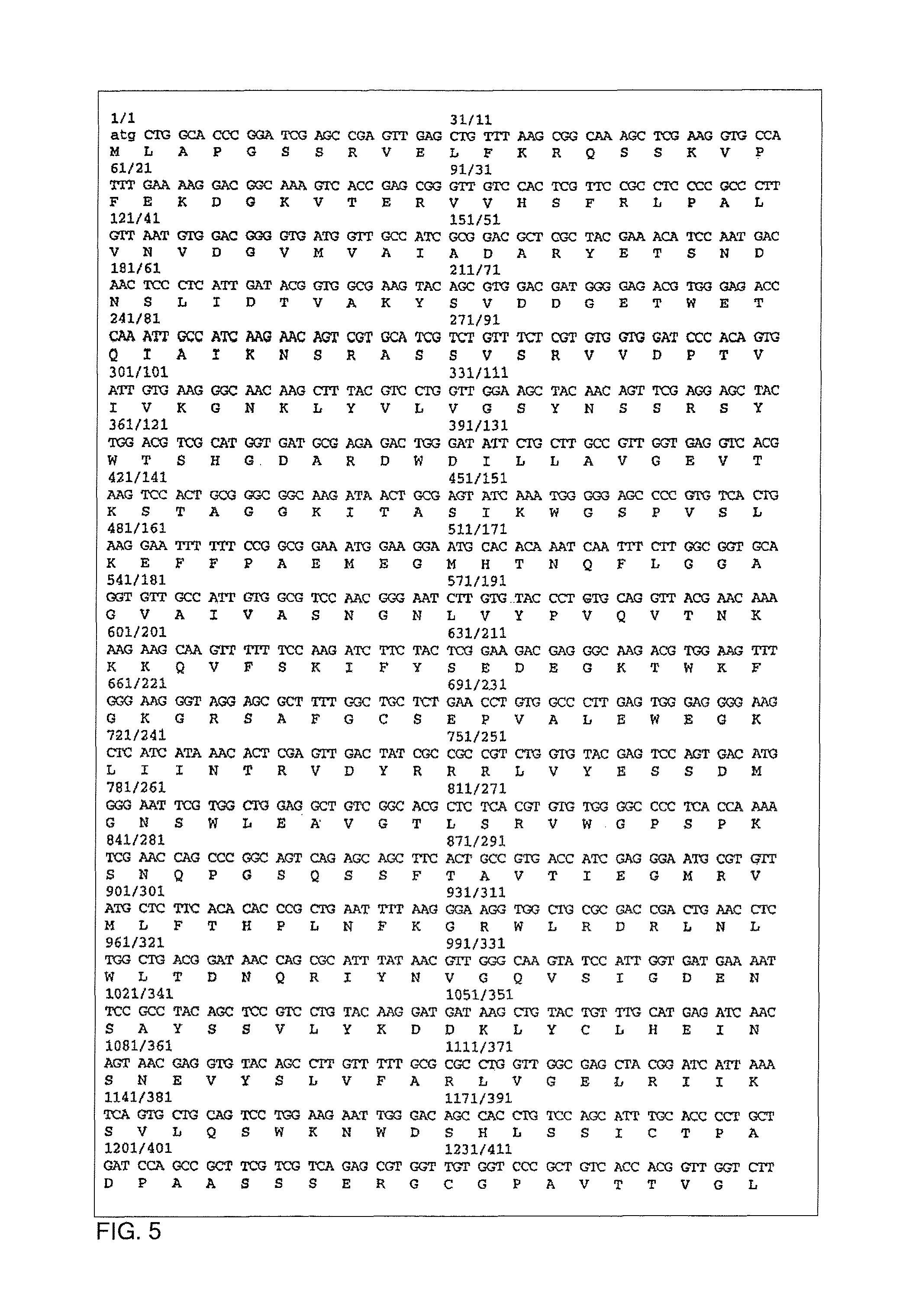Multicomponent or monocomponent vaccine to be used against Chagas disease, pharmaceutical compositions containing them, procedure for the obtention of immunogen of said vaccines, and nucleic acid used in said procedure
a multi-component, vaccine technology, applied in the field of nucleic acid, can solve the problems of poor efficacy of available therapeutics, high risk of transmission of i>t. cruzi/i>to non-infected individuals through organ transplants and blood transfusions from infected immigrant donors, and increase the risk of infection, so as to reduce the clinical consequences of infection and stimulate the immune response
- Summary
- Abstract
- Description
- Claims
- Application Information
AI Technical Summary
Benefits of technology
Problems solved by technology
Method used
Image
Examples
Embodiment Construction
[0026]The present invention provides an efficient vaccine for treating or avoiding the infection of a mammal by Trypanosoma cruzi derivatives (i.e. T. Cruzi and / or a conserved region common to many of them). In a preferred embodiment, the vaccine is effective against infection and / or illness caused by T. cruzi. The multicomponent vaccine of this invention is for the Chagas disease (American tripanosomiasis) comprising: (a) an immunogenic portion formed by one or more recombinant or synthetic polypeptides, or fractions thereof, and (b) one or more polynucleotides including the regions that codifying one or more immunogenic polypeptides, both portions for the Trypanosoma cruzi derivates (i.e., T. Cruzi and or a conserved region common to many of them) where the vaccine administration is a protection against the parasite infection, eliminates it or reduces the clinical consequences of the infection. One polynucleotide vaccine contains one or more polynucleotides that comprise the regio...
PUM
| Property | Measurement | Unit |
|---|---|---|
| structure | aaaaa | aaaaa |
| TGA | aaaaa | aaaaa |
| pH | aaaaa | aaaaa |
Abstract
Description
Claims
Application Information
 Login to View More
Login to View More - R&D
- Intellectual Property
- Life Sciences
- Materials
- Tech Scout
- Unparalleled Data Quality
- Higher Quality Content
- 60% Fewer Hallucinations
Browse by: Latest US Patents, China's latest patents, Technical Efficacy Thesaurus, Application Domain, Technology Topic, Popular Technical Reports.
© 2025 PatSnap. All rights reserved.Legal|Privacy policy|Modern Slavery Act Transparency Statement|Sitemap|About US| Contact US: help@patsnap.com



